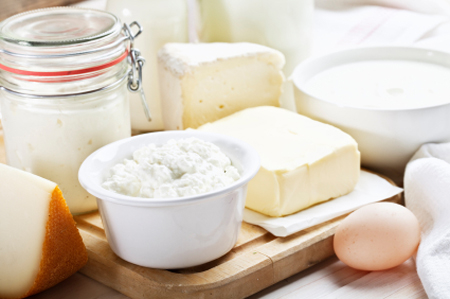Dairy recovery continues, as demand returns to the market
Category: Dairy
 (Agrimoney) – Dairy prices on GlobalDairyTrade auction site have risen for the fourth session running, outperforming the future’s market.
(Agrimoney) – Dairy prices on GlobalDairyTrade auction site have risen for the fourth session running, outperforming the future’s market.
Dairy prices at Tuesday’s action event, which is held by New Zealand milk giant Fonterra, were up 16.5% from the last auction event two weeks ago, bringing prices to their highest level since the start of April.
Prices for whole milk powder rose by 20.6% from the last auction event, with skim milk powder up 17.0%.
The jump in prices outpaces the rise in the futures market, which was indicating a price rise of 10-15% for whole milk powder compared to the last auction.
Demand returns
Milk powder prices have been recovering since Fonterra announced it was cutting the amount of product it was making available on the GlobalDairyTrade platform.
Prices on GlobalDairyTrade are now up 48% from a 13-year low reached two months ago.
Thomas Bailey, dairy analyst at Rabobank, said that the buyers had finely found a reason to enter a market.
“These low prices that we saw have sparked demand,” he said.
Mr Bailey also noted seasonal effects. “Chinese buyers come into the market at this time of year to hit to 2016 quota targets, and we’re also reaching the time to order for Chinese New Year’s when demand peaks, so at these lower prices why not?”
Suppliers squeezed
And falling prices have also squeezed suppliers, which could threatens production in New Zealand, the world’s largest dairy exporter.
“It’s unlikely that we’re going to see a full blown growth in dairy commodity prices,” said Mr Bailey.
“European producers are still cranking out plenty of milk, and US prices are still largely above breakeven.”
“But New Zealand farmers have been hard hit by the fall in prices.”
Cost-cutting
Mr Bailey said than New Zealand production could fall by as much as 5-10% next season, as cash-strapped farmers cut costs.
“Feed is going to be one of the first things to go,” he said, while farmers could also bring in less-frequent milking to cut labour costs, reduce fertilizer-spreading on pasture, or slaughter dairy cows.
And that is without counting the effect of a drought, which would prevent farmers from relying on pasture as they cut feeding.
El Nino worries
The Real Estate Institute of New Zealand (Reinz) on Tuesday noted lingering worries on the effect of El Nino on New Zealand.
The El Nino Effect is associated with dryness in the eastern Pacific, which slows pasture growth and reduces milk production.
On Tuesday the Australian Weather Bureau gave its first detailed forecast of the weather pattern’s duration, expecting the effect to remain evident into next year.
Demand to remain low
This week the Australian crop bureau Abares forecast average milk prices to fall next season.
Abares forecast 2015-16 whole milk powder prices to average $2,400 a tonne, compared to $2,775 a tonne in 2014-15.
Whole milk traded at an average of $2,495 a tonne on Tuesday.
“World import demand for dairy product is expected to remain low in 2015-16 because of reduced demand from China and the Russian Federation” Abares said.
Although Abares saw Chinese demand recovery marginally thanks to a decline in stocks, the bureau expected imports to remain “significantly below the record highs of 2014 as an assumed slowdown in Chinese economic growth constrains rises in retail sales of milk products”.




